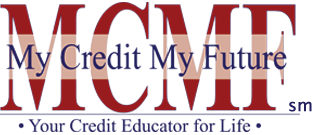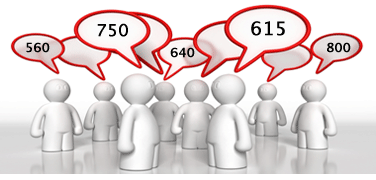

- Credit 101
- Teaching Tools
- Scores
- Life Stages
- Credit Mishaps
- Understanding Different Bankruptcy Chapters
- Your Credit Report After a Bankruptcy
- Understanding Judgments
- Inaccuracies on Your Credit Report
- Disputing Credit Report Errors
- Understanding Foreclosure
- The Foreclosure Process & What To Do Afterwards
- Understanding Identity Theft
- In the event of: The Death of a Spouse
- Rebuilding Your Credit
- Choosing a Reputable Credit Counselor
- Avoid the Downside of Credit Mismanagement
- What is a Credit Freeze
- Worksheets & Letters
- 6 Steps to Creating a Budget
- Household Budget: Wants vs Needs
- Personal Budget Template
- Understanding Amortization Schedules
- Loan Amortization Calculator
- Sample Opt-Out Letter
- Sample Dispute Letter
- Annual Credit Report Request Form
- Auto Loan Payment Calculator
- Back-to-School Budgeting
- Cost of Credit
- Emergency Fund
- How Much Car Can You Afford
- How Much House Can You Afford
- How Much Will College Cost
- How Much Will My Loan Cost
- How Will My Savings Grow
- Mortgage Payment
- Mortgage Refinancing
- Pay Down Debt or Invest
- Repaying Student Loans
- Retirement Fund
- Rework Your Budget
- Saving for a Goal
- Should I Consolidate My Debt
- Travel Budgeting
- Your Holiday Budget
- Buying a House
- 5 Steps to Buying a Home
- 5 C's of credit When Applying for a Loan
- What Score is Needed to Purchase a Home
- Using a Realtor
- Understanding Fixed Rate Mortgages
- Understanding FHA Loans
- Understanding VA Loans
- Understanding Interest Only Loans
- Understanding ARM Loans
- Understanding Combo Loans
- Understanding Streamline K Loans
- Understanding Bridge Loans
- Understanding HELOC (Home Equity Line of Credit)
- Understanding Reverse Mortgages
- Basic Mortgage Underwriting Principles
- Credit & Financial Law
- Home

5 C's of Credit When Applying for a Loan
What Score Is Needed to Purchase a Home
Understanding Fixed Rate Mortgages
Understanding Interest Only Loans
Understanding Streamline K Loans
Understanding HELOC (Home Equity Line of Credit)

Understanding Streamline-K Loans
If you've been passing up buying homes that require cosmetic repairs for lack of funds to fix them up, FHA has a program for you. Not to be confused with FHA's much more complicated 203K program, a Streamline-K loan eliminates much of the paperwork and simplifies the process to obtain rehab funds.
How Does a Streamline-K Loan Work?
It used to be that you bought a home and then applied for a home equity loan to fix it up, resulting in two loans. But many lenders won't make rehab loans. Some won't fund equity loans at closing, especially if there is no equity.
- A Streamline-K loan is figured into the original loan balance, resulting in one loan.
- It can be an adjustable-rate or fixed-rate mortgage.
- The mortgage balance can exceed the purchase price of the property.
- Borrowers are not required to hire professional consultants, licensed engineers or architects.
- The appraiser or home inspector can put together a list of recommended repairs / improvements.
Eligible Repairs & Improvements
The Streamline-K loan allows for simple repairs that can be easily estimated and completed. Many are considered light cosmetic repairs, but some will require hiring a licensed contractor if it falls out of the borrower's area of expertise. Here is an approved list of repairs / improvements from HUD:
- Roofs, gutters and downspouts
- HVAC systems (heating, venting and air conditioning)
- Plumbing and electrical
- Minor kitchen and bath remodels
- Flooring: carpet, tile, wood, etc.
- Interior and exterior painting
- New windows and doors
- Weather stripping & insulation
- Improvements for persons with disabilities
- Energy efficient improvements
- Stabilizing or removing lead-based paint
- Decks, patios, porches
- Basement completion and waterproofing
- Septic or well systems
- Purchase of new kitchen appliances or washer / dryer
Special Conditions & Terms
- No minimum loan balance required.
- Borrowers must occupy the property.
- Property cannot be vacant for more than 30 days.
- Work must be completed within six months.
- Work must be professional.
- If job requires a permit, borrowers must get a permit and a sign-off.
- Work must commence within 30 days from closing.
Repairs Not Permitted
- Landscaping or yard work
- Major remodeling
- Moving a load-bearing wall
- Room additions or add-ons to the home
- Fixing structural damage
Requirements to Perform the Work
- Borrowers can select among licensed contractors.
- The lender will review the contractor's experience, background and referrals.
- The lender will want a copy of the contractor's estimate and the agreement between the contractor and borrower.
- Borrowers can also arrange to do some or all of the work under a "self help" arrangement.
- Do-it-yourself projects require providing the lender with documentation supporting the borrower's knowledge, experience and ability to perform the necessary work.
Disbursement of Payments
- Maximum of two payments to each contractor, including the borrower, providing the borrower works under a "self help" plan.
- No more than a 50% advance is allowed.
- Do-it-yourself allowances do not include labor; only materials costs are allowed.
- Final payment is paid after submission of evidence of payment to sub-contractors / suppliers or other possible lien claimants.
Reasons to Apply For a Loan Below $15,000
- The lender is not required to inspect the completed work.
- The lender is not required to authorize a third party to inspect the completed work.
- A letter from the borrower or copies of contractor receipts will suffice as notice of completion, providing the lender has no reason to determine a third-party inspection is necessary.
